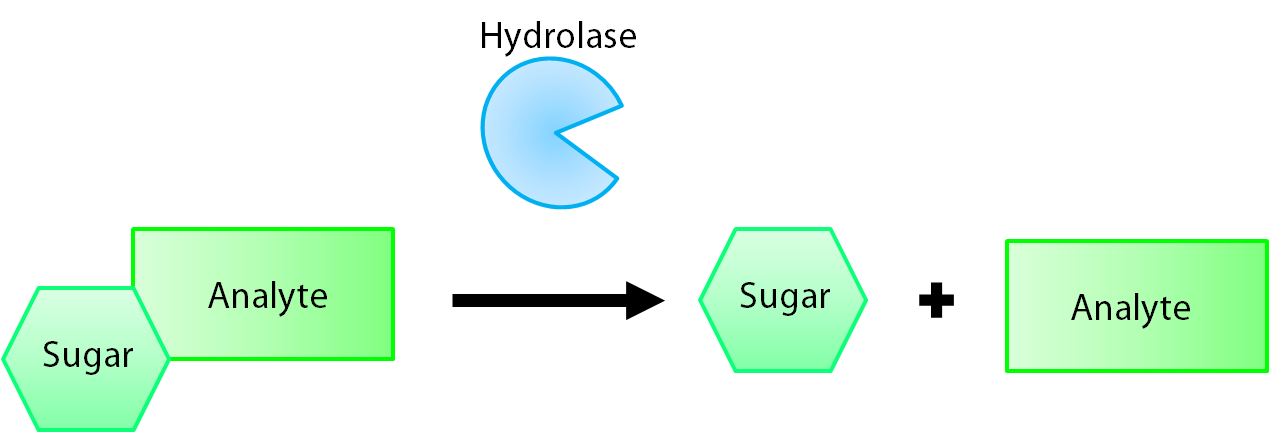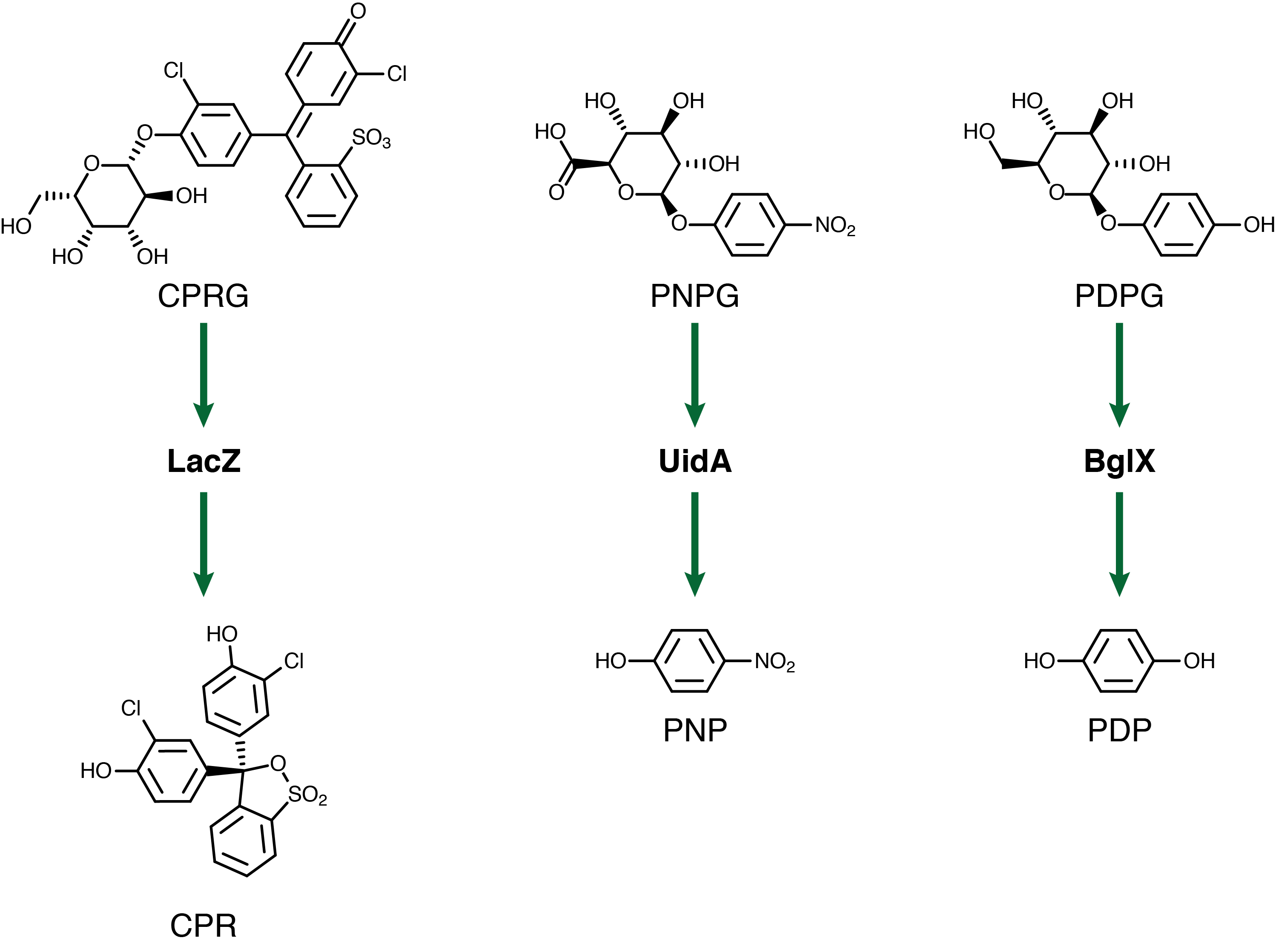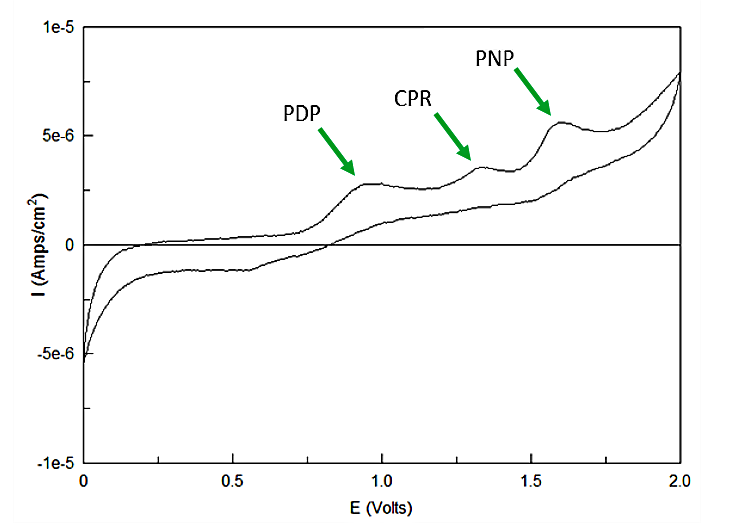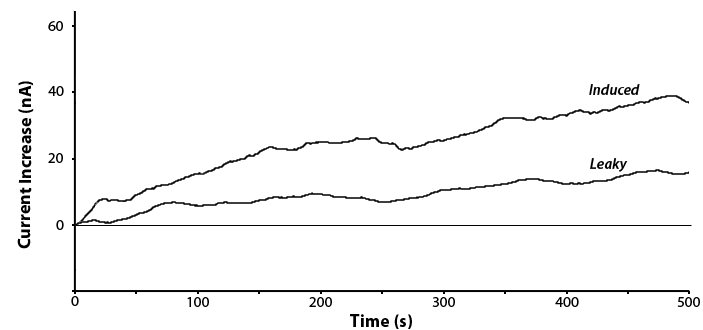Team:Calgary/Project/FRED/Reporting
From 2012.igem.org


Hello! iGEM Calgary's wiki functions best with Javascript enabled, especially for mobile devices. We recommend that you enable Javascript on your device for the best wiki-viewing experience. Thanks!
A Novel Electrochemical Reporting System

For FRED to be able to tell us about the toxins he's sensing we needed a good reporter system that could function in a wide array of environments. Unfortunately the traditional fluorescent or luminescent reporters have significant drawbacks that prevent them from being useful in a tailings environment that is murky and potentially anaerobic. Due to these limitations we decided to improve upon last year's electrochemical sensor using the lacZ gene to cleave a substrate into an easily detectable analyte. Our team has developed a system that utilizes three separate reporter genes to provide a triple-output biosensor. This system overcomes traditional reporters in that it is fast, accurate, and can function in turbid environments and even in the absence of oxygen!
How Does it Work?
The enzymes encoded by our reporter genes are specific sugar hydrolases. This means that they target one kind of sugar and remove it from whatever compound they are attached to. We have chosen to use the sugars glucose, glucuronide, and galactose for our system. The genes reposnsible for their respective hydrolases are bglX, uidA, and lacZ. By having our electrochemical analyte conjugated to this sugar, when the hydrolase is expressed the sugar is cleaved from the analyte, allowing for it's electrochemical detection. A diagrammatic representation of this system is shown below in figure 2.
After the analyte is released we need to detect it. Electrochemistry is an excellent approach for this because of it's fast and quantitative nature. A voltage is applied between two electrodes compared to a reference electrode and the resulting current is measured. By changing the applied voltage to that of the oxidation voltage of one of our analytes, the increase in current due to it's oxidation when compared to an analyte free baseline is proportional to the amount of analyte present in the solution. This process happens so quickly that you can have an output value in a matter of seconds.
We used two different electrochemical techniques in our testing depending on what question the experiment was trying to answer. When we were characterizing the voltages at which our products oxidized we used cyclic voltammetry, which is where you apply a voltage and then slowly increase and decrease it over a designated sweep range. Any bumps in the graph are due to a reaction and can be standardized against baseline measurements. After the oxidation potential has been localized we can speed up our experiments by using potentiostatic runs. In this case instead of sweeping the voltage we apply to the solution we hold it steady at the voltage that will oxidize our compound the moment it is released into the solution. Both of these techniques require the three electrodes in an electrolyte solution such as phosphate buffered saline and can routinely detect nanomolar concentrations of electrochemical analytes.
Genes, Chemicals, and Circuits
For our system to have a triplex outplut we need three seperate genetic circuits with three analytes possessing unique oxidation potentials. If one chemical overlaps with another we could get false-positives of one chemical due to oxidation of another. To this end we have chosen to use chlorophenol red (CPR), para-diphenol (PDP), and para-nitrophenol (PNP). These compounds are conjugated with their sugars to form CPR-β-D-galactopyranoside (CPRG), PDP-β-D-glucopyranoside (PDPG), and PNP-β-D-glucuronide (PNPG). An easy way to tell the analytes from their sugar conjugates is the addition of the letter G to the acronym. These chemicals are summarized below in figure 3 along with the reporter genes used with each one.
Out of the three sugar conjugates the only one that exhibits any electrochemical activity is PDPG, with it's oxidation potential at 0.6V vs the reduction of hydrogen reference electrode (RHE). The three analytes have potentials at 0.825V for PDP, 1.325V for CPR, and 1.6V for PNP vs RHE. As none of these peaks overlap and no sugar conjugates interfere with their signals the three chemicals can be detected in the same solution. This is shown below in figure 4.
With the chemicals finalized we now needed to construct our circuits. The lacZ gene under the control of the lacI promoter in the registry has a frameshift mutation, rendering the enzyme nonfunctional. As such we have reconstructed this circuit and submitted it to the registry (BBa_K902008???). The bglX and uidA genes were amplified from the E. coli genome using PCR and biobricked as BBa_K902004 and BBa_K902000 respectively. These genes were then also constructed under the lacI promoter to allow for comparison testing.
Does it Work?
Yes! We have been able to show that when induced with IPTG we can observe the cleavage of our compounds into the detectable analyte. Shown below in figure 5 is the detection of PNP by the cleave of PNPG when uidA was induced by IPTG or not. This also shows that there was a lot of background expression of our promoter when it was not induced.
We have also been able to show sensitive detection of CPR through the action of the lacZ gene cleaving CPRG. This was done with a constitutive promoter from the transposon screen. The test also shows that electrochemical reporters can work in Pseudomonas cultures. This detection is shown below in figure 6.
Detection of bglX, our final electrochemical reporter, was tested with the constitutive tetR promoter found in the BBa_J13002 biobrick. The response in E. coli is shown below in figure 7.
What Next?
With our electrochemical system functioning properly we can now hook up our reporter genes to promoters found in the transposon library for a final detection system. We have also created a hardware and software platform for a field-ready biosensor. Our system has also been mathematically modeled in MATLAB to aid us in planning time courses for the experiments and the final prototype. When combined with the mechanical and biological containment mechanisms used in our system these genes create a novel and safe approach to biosensing in the oil sands and in many other potential applications.
 "
"




